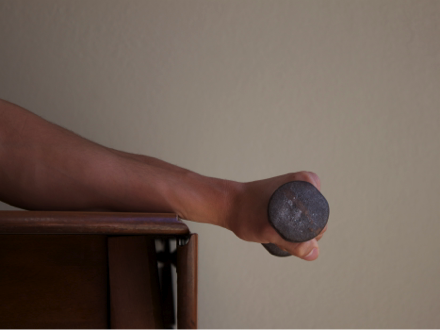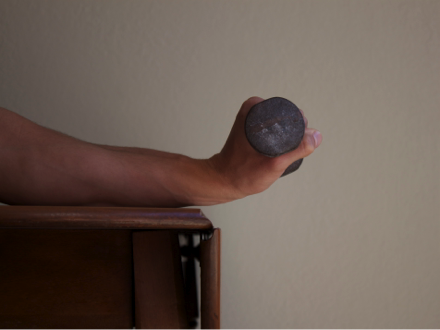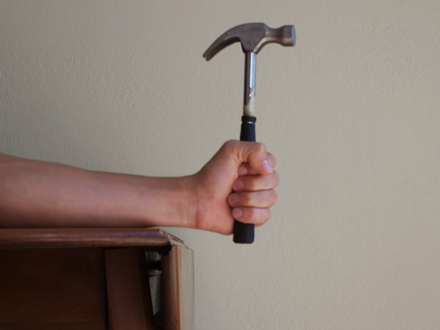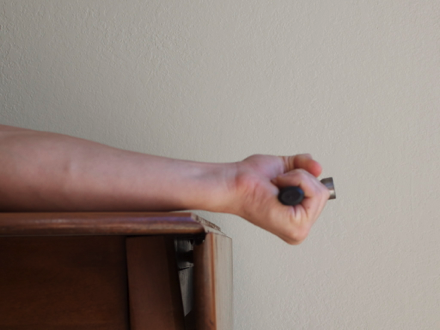Prevent and Treat Climber’s Elbow
This article only describes the personal experiences and recommendations of a self-proclaimed injured climber dealing with climber’s elbow. If you already suffer from chronic pain or discomfort, consult a physical therapist for a personalized rehabilitation program. This article first appeared on mojagear.
Climbing tends to attract a rather obsessive breed of people. Unfortunately, obsessing over an extremely strenuous activity makes you extremely injury prone. You have most likely noticed that injury is among the more popular topics of conversation at your local crag or gym. Make sure that you can contribute to that conversation with useful tips for injury prevention, instead of a personal list of injuries.
Golfer’s Elbow
Golfer’s elbow is a term describing tendinosis of the medial elbow tendons (also called medial epicondylitis). This is an irritation or deterioration of the tendons connecting to the knob on the lower, inner elbow (See Figure 1). The gradual onset of this chronic injury is a result of microscopic tears that are not allowed to properly heal. A frequent and strenuous climbing schedule may subject your tendons to stress and strain before they are fully recuperated. These micro tears accumulate and grow over weeks or months and eventually turn into full-fledged tendinosis. It may also develop as a result of muscle imbalance in the forearm.
At first, the pain is dull and might be mistaken for a slight soreness after a day of climbing. However, if the pain is recurring and is experienced during everyday tasks, you may have tendinosis. The gradual onset and lack of inflammation or swelling makes tendinosis difficult to detect.
Tennis Elbow
Tennis Elbow is a term for tendinosis of the lateral elbow tendons (also called lateral epicondylitis). The symptoms are similar to Golfer’s Elbow but afflict the antagonistic muscles of the forearm on the upper, outer part of the elbow (See Figure 1). Due to the flexor intensive nature of rock climbing, your tensors are relatively underdeveloped. This imbalance is the usual suspect when it comes to tennis elbow.
Tendonitis
Tendonitis is caused from a single strenuous motion and results in inflamed or swollen elbow tendons. Although elbow tendinosis and tendinitis are two separate injuries, they are unfortunately often concurrent ones. Prevented measures for tendinitis include regular icing and moderate use of NSAID (Non-Steroidal Anti-Inflammatory Drugs) to reduce swelling.
 |
Areas of pain associated with each tendon injury. Photo source: rpm-therapy.com |
Prevention
The one thing that all tendon injuries share is a slow healing rate. Tendons lack the abundant blood flow that our muscles enjoy, and thus require more time to heal and warm up. Tendinosis may leave your tendons functioning at 70 percent for months or even years if not treated properly (Hörst, 2007). Here are a few quick and easy tips for preventing this from ever happening:
- Tendonitis most commonly develops from overuse. Make sure to schedule in rest days to allow proper and full recovery. If you’ve had five ‘high gravity’ days in a row, consider taking a rest. Your body probably needs it.
- Gradually ramp up your workouts to give your tendons time to strengthen. Eager climbers often rush into a new hardcore workout routine. This may lead to injury from imbalance because muscles develop faster than tendons.
- Stay hydrated! Proper hydration facilitates transport of nutrients to the cells, helps protect tissues from injury, and maintains joint lubrication (Hörst, 2008).
- Stretch! Perform both flexor and extensor stretches regularly in order to maintain proper mobility and flexibility in your forearm.
- Cardio, cardio, cardio. If you enjoy bouldering, your climbing day probably involves a lot of lounging between sporadic attempts at the project. Since climbing doesn’t always offer a cardio workout, consider running or swimming on your rest days. This will ensure that your tendons get proper blood circulation and will hasten recovery.
- Train your antagonistic muscles. When a football player hits the weight room, they focus on muscles that are not used much on the field. This ensures an overall high fitness level, not just in isolated muscle groups. Do the same.
There are several exercises that target your medial and lateral elbow tendons and allow for an isolated workout. Keeping them strong will help prevent any imbalance or weakness. Remember to perform these exercises with low resistance.
Reverse Wrist Curls
This exercise targets the lateral elbow tendons. While seated, rest your forearm on your thigh, desk or armchair so that your hand faces palm down and overhangs the knee by several inches. Grip a five to ten pound dumbbell, and begin with a straight wrist position. Curl the dumbbell upward until the hand is fully extended. Hold this top position for one second then lower the dumbbell to the starting position. Attempt 15 to 20 slow repetitions and avoid lowering the dumbbell below horizontal. Remember to rest between sets.


Forearm Pronators
This exercise targets the medial elbow tendons. While seated, rest your forearm on your thigh, desk or armchair with your hand in the palm up position. Firmly grip a hammer (or heavy metal pipe) so that it’s parallel to the floor. Turn your hand inward and lift the hammer to a vertical position. Pause, and then slowly lower back to the starting position. Attempt 15 to 20 slow repetitions and avoid lowering the hammer below horizontal. Remember to rest between sets.
 |
| Add caption |
 |
| Add caption |
“Climber’s Elbow” is the second most common climbing injury according to a poll on Nicros.com. It is easy to misdiagnose, or worse, completely deny elbow tendon injuries. Keep in mind that proper treatment or prevention of tendon injuries is crucial. Stay healthy enough to make climbing a life long passion, not a short-lived phase!
Comments
Post a Comment